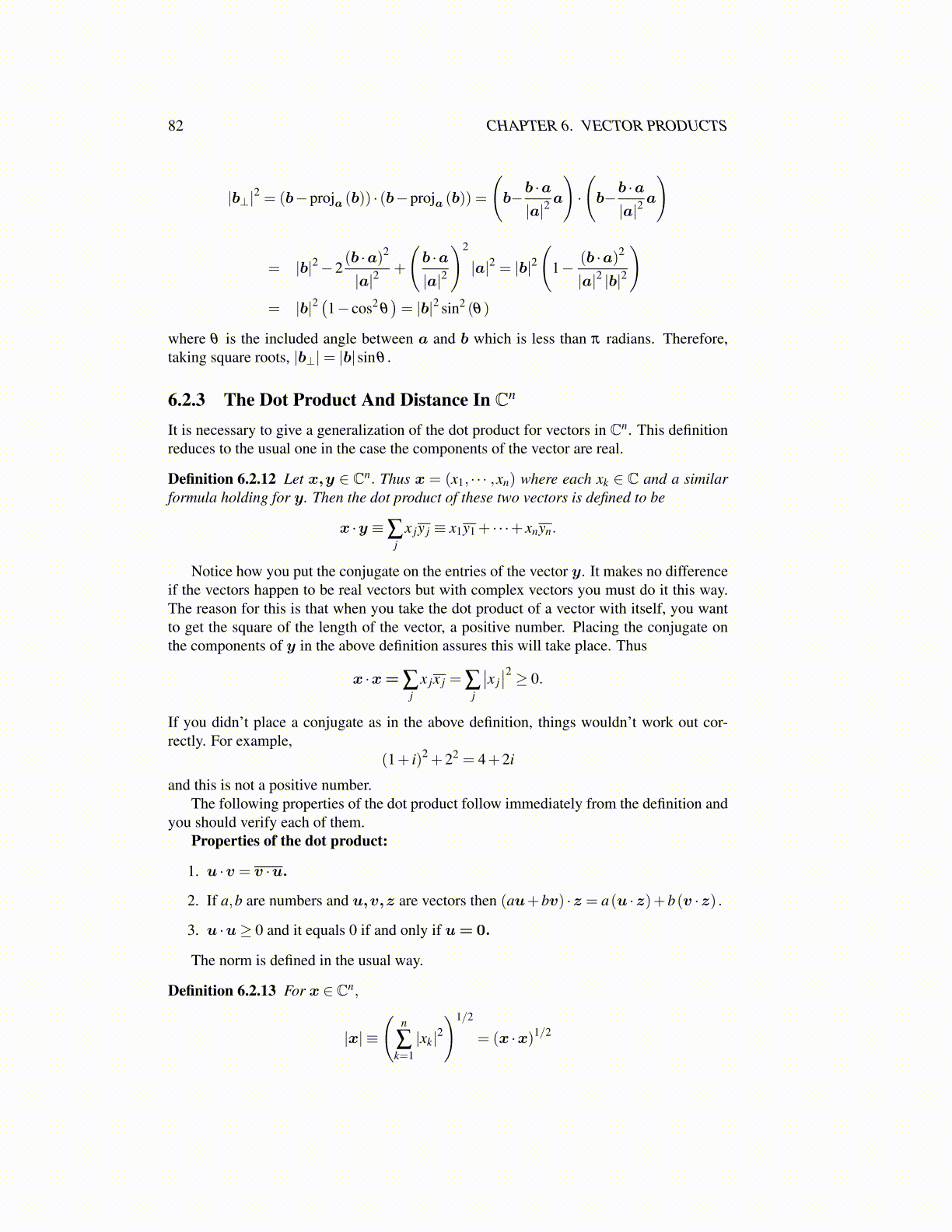
82 CHAPTER 6. VECTOR PRODUCTS
|b⊥|2 = (b−proja (b)) · (b−proja (b)) =
(b−b ·a|a|2
a
)·
(b−b ·a|a|2
a
)
= |b|2−2(b ·a)2
|a|2+
(b ·a|a|2
)2
|a|2 = |b|2(
1− (b ·a)2
|a|2 |b|2
)= |b|2
(1− cos2
θ)= |b|2 sin2 (θ)
where θ is the included angle between a and b which is less than π radians. Therefore,taking square roots, |b⊥|= |b|sinθ .
6.2.3 The Dot Product And Distance In Cn
It is necessary to give a generalization of the dot product for vectors in Cn. This definitionreduces to the usual one in the case the components of the vector are real.
Definition 6.2.12 Let x,y ∈ Cn. Thus x = (x1, · · · ,xn) where each xk ∈ C and a similarformula holding for y. Then the dot product of these two vectors is defined to be
x ·y ≡∑j
x jy j ≡ x1y1 + · · ·+ xnyn.
Notice how you put the conjugate on the entries of the vector y. It makes no differenceif the vectors happen to be real vectors but with complex vectors you must do it this way.The reason for this is that when you take the dot product of a vector with itself, you wantto get the square of the length of the vector, a positive number. Placing the conjugate onthe components of y in the above definition assures this will take place. Thus
x ·x= ∑j
x jx j = ∑j
∣∣x j∣∣2 ≥ 0.
If you didn’t place a conjugate as in the above definition, things wouldn’t work out cor-rectly. For example,
(1+ i)2 +22 = 4+2i
and this is not a positive number.The following properties of the dot product follow immediately from the definition and
you should verify each of them.Properties of the dot product:
1. u ·v = v ·u.
2. If a,b are numbers and u,v,z are vectors then (au+bv) ·z = a(u ·z)+b(v ·z) .
3. u ·u≥ 0 and it equals 0 if and only if u= 0.
The norm is defined in the usual way.
Definition 6.2.13 For x ∈ Cn,
|x| ≡
(n
∑k=1|xk|2
)1/2
= (x ·x)1/2